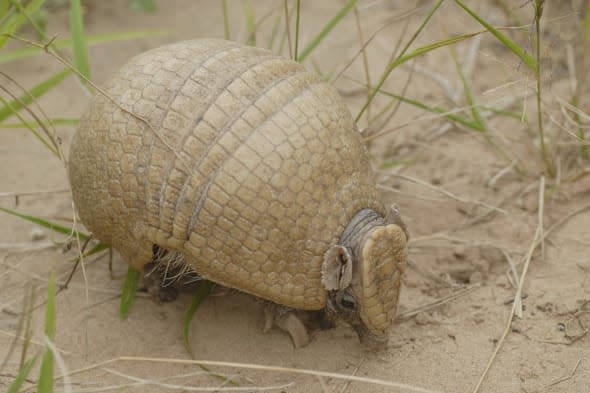Lemurs threatened with world extinction

More than 90 per cent of lemurs are being threatened with extinction, the latest global assessment of at-risk species has shown.
They are among the 22,103 species assessed by experts as being in the three 'at-risk' categories of critically endangered, endangered or vulnerable to extinction in the IUCN Red List.

The latest update showed that 94 per cent of lemur species in Madagascar - the only place they are found - were threatened with extinction, making them one of the most endangered species of animals on Earth.
Of the African island nation's 101 remaining lemur species, more than one fifth (22) were critically endangered, including the largest living lemur, the large-bodied Indri. Words: PA
Almost half, 48 species, were endangered, including the world's smallest primate, Madame Berthe's mouse lemur, and 20 were vulnerable to extinction.
Lemurs were threatened by destruction of tropical forest habitat, with illegal logging on the increase in the face of political uncertainty and rising poverty in Madagascar, and from being hunted for food.
Dr Chistoph Schwitzer, on the IUCN's primate specialist group and director of Conservation at Bristol Zoological Society, said: "Despite profound threats to lemurs, which have been exacerbated by the political crisis in Madagascar, we believe there is still hope.
"Past successes demonstrate that collaboration between local communities, non-governmental organisations and researchers can protect imperilled primate species," he said, calling for concerted efforts to ensure lemurs survived.
Dr Thomas Lacher, of Texas A&M University, said the high threat level to lemurs required significant action.
He said they served a critical role in threatened ecosystems in Madagascar.
"They also represent an important source of tourism revenue for the country, and as a result are a clear case where conservation can provide local economic benefits," he said.

Lemurs are just one of the many species on the new endangered list. Almost four-fifths of slipper orchids (pictured above), which are found in North America, Europe and temperate regions of Asia, are also at risk of dying out, the International Union for Conservation of Nature (IUCN) Red List of threatened species has revealed.
The new assessment found that the Japanese eel, a traditional delicacy and the country's most expensive food fish, is endangered, while the Brazilian three-banded armadillo (pictured below) - the mascot for this year's World Cup - remains vulnerable to extinction.

A global assessment of temperate slipper orchids found that 79 per cent of the popular ornamental plants, which have characteristic slipper-shaped flowers that trap insects to ensure pollination, were threatened with extinction.
Their plight was the result of destruction of their habitat and over-collection of wild species for trade, even though international trade is regulated.
The freckled cypripedium, which has fewer than 100 individuals left in south-eastern Yunnan in China and the Ha Giang province of Vietnam, was endangered due to over-collection and deforestation.
The Dickinson's cypripedium which has only scattered populations in Mexico, Guatemala and Honduras, was also endangered as its open forest habitat was being cleared for agriculture, the assessment found.
Hassan Rankou, on the IUCN's orchid specialist group, which is based at the Royal Botanic Gardens, Kew, said: "What was most surprising about this assessment was the degree of threat to these orchids.
"Slipper orchids are popular in the multimillion-dollar horticultural industry.
"Although the industry is sustained by cultivated stock, conservation of wild species is vital for its future."
Elsewhere, the banana orchid, the national flower of the Cayman Islands, had been assessed for the first time and listed as endangered, due to loss of its habitat for housing and tourism developments.
All eight species of African violets, found in the Eastern Arc mountains of East Africa, were assessed and all but one were at risk of extinction, with three critically endangered.
The Japanese eel was listed as endangered due to its loss of habitat, overfishing, barriers to migration, pollution and changes to oceanic currents.
The Red List update also included a re-assessment of the Brazilian three-banded armadillo, which was believed to have declined by more than a third over the last 10-15 years due to loss of half its shrubland habitat and remained listed as vulnerable to extinction.
But there was good news for Israel's Yarkon bream, a fish species whose status went from extinct in the wild to vulnerable as a result of a captive breeding programme and release of 9,000 fish into restored habitat in the country's rivers.
More than 73,000 species were assessed by conservationists for the IUCN Red List, which is marking its 50th anniversary this year.
The latest update listed 4,554 species as critically endangered, 6,807 species as endangered and 10,742 species as vulnerable to extinction.
Related articles
New animal species discovered include a camouflaged gecko
Rare black lemur born at Sussex zoo
New species of snake discovered that looks like a penis





